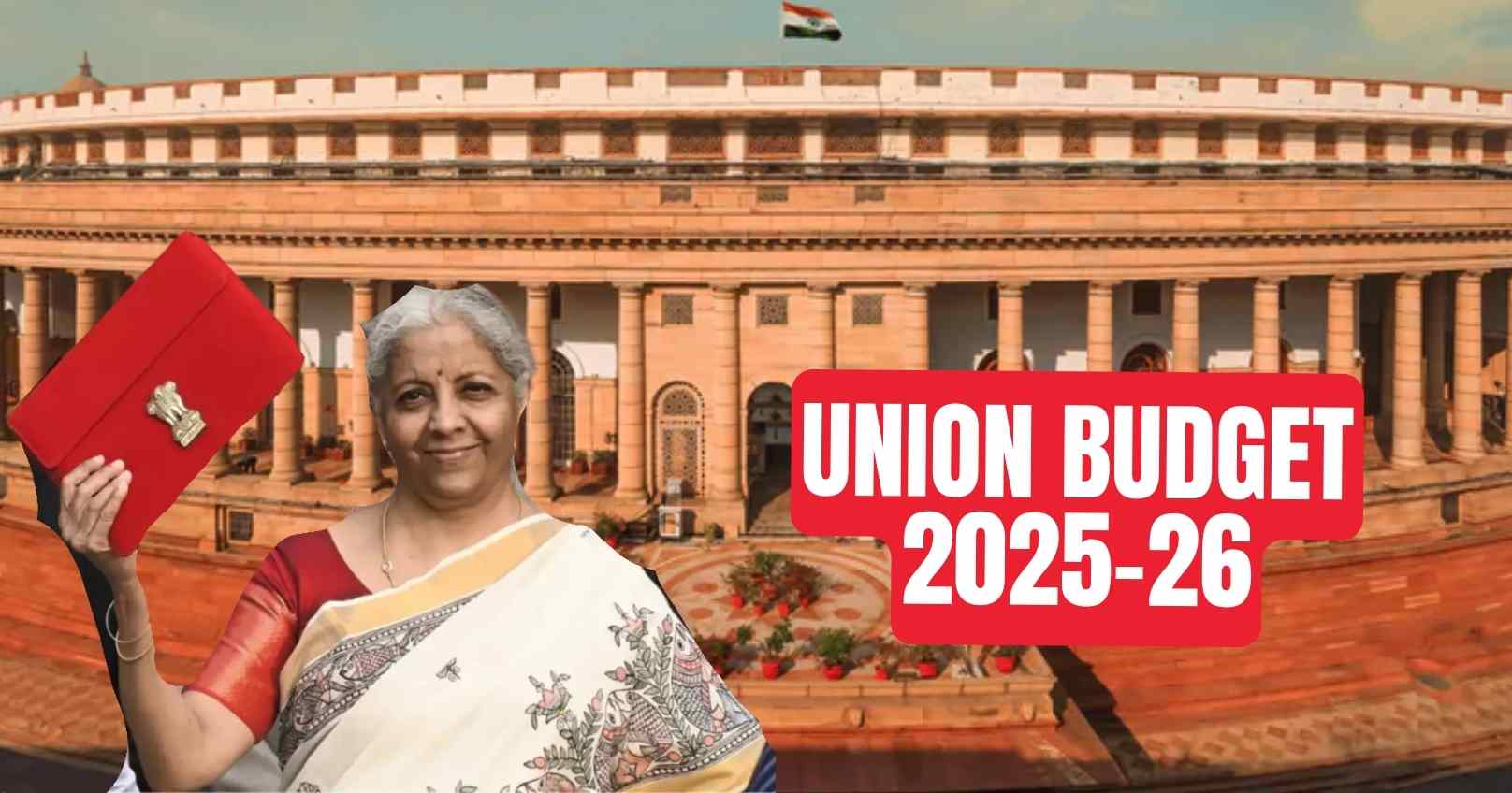Introduction
The Union Budget of India plays a vital role in shaping the country's economic trajectory, public finances, and overall development. Finance Minister Nirmala Sitharaman’s 2025 Union Budget aims to propel India towards becoming a "Viksit Bharat" (Developed India) through a combination of tax reforms, rural economic growth, MSME support, innovation, power sector upgrades, and financial sector liberalization. Notably, this marks the 8th time Nirmala Sitharaman has presented the budget, placing her second behind Morarji Desai, who presented it 10 times, though not consecutively.
A key highlight of the budget is the rise in the income tax exemption limit from ₹7 lakh to ₹12 lakh, a move anticipated to increase disposable income and stimulate consumer demand. The budget also introduces modernization programs for agriculture, incentives for startups, investments in research-driven education, and increased allocations for infrastructure projects, positioning India for sustained long-term economic growth.
While these initiatives reflect a bold, forward-thinking vision, concerns about fiscal sustainability, inclusive economic growth, and potential implementation challenges remain. The success of this budget will largely depend on its execution, governance efficiency, and balanced revenue generation to support public welfare and infrastructure growth. Below are the main features and concerns of the 2025 budget:
Personal Income Tax Reforms: Unprecedented Relief
One of the most notable changes in this budget is the decision to raise the income tax exemption limit to ₹12 lakh. This is expected to boost disposable income for middle-class taxpayers, encourage consumer spending, and drive demand in sectors such as housing, automobiles, and retail. The simplification of the tax structure also reduces the compliance burden, making tax filing easier for individuals.
However, it’s important to note that this tax exemption will likely lead to reduced direct tax revenue. Direct taxes form a large portion of the government’s income, and this exemption could create a revenue gap unless compensated by alternative tax measures. While the focus on providing middle-class tax relief will benefit urban and semi-urban populations, it does little to help lower-income groups, who are already outside the taxable bracket.
If the expected economic growth does not generate enough compensatory revenue, the government may face fiscal pressure, potentially impacting capital investments and welfare programs.
Agricultural and Rural Development: Supporting Farmers
Several measures have been introduced to bolster India’s agricultural sector, which employs more than 50% of the population. The Pradhan Mantri Dhan Dhanya Krishi Yojana, covering 100 agricultural districts and benefiting 1.7 crore farmers, aims to boost productivity and ensure food security. Additionally, the Kisan Credit Card limit has been raised from ₹3 lakh to ₹5 lakh, improving credit access for small farmers. The government has also emphasized self-sufficiency in pulse production to reduce reliance on imports.
However, several fundamental challenges in agriculture remain unaddressed. Issues such as poor irrigation infrastructure, inadequate mechanization, and uncertain MSP policies continue to impede the sector’s long-term sustainability. While credit access has improved, a lack of proper risk mitigation mechanisms leaves farmers vulnerable to market volatility and climate-related risks. Without addressing these deeper structural challenges, the sector may not experience significant growth, despite the immediate financial support.
MSME and ‘Make in India’ Boost
The budget recognizes the MSME sector as crucial for employment and industrial growth. It introduces a ₹2 crore loan scheme for first-time entrepreneurs with a five-year repayment period, along with a Micro-Enterprise Credit Card scheme offering ₹5 lakh limits. Additionally, the revised definition of MSMEs, which increases the investment cap to ₹2.5 crore, is expected to expand eligibility for government incentives and further support the ‘Make in India’ initiative.
While these measures provide financial support, the main challenge lies in accessibility and implementation. Many MSMEs, especially micro and small businesses, struggle with securing loans due to bureaucratic delays, stringent collateral requirements, and lack of formal documentation. Unless clear steps are taken to streamline credit distribution and reduce regulatory barriers, these initiatives may not deliver the expected benefits.
Innovation and Education: Strengthening the Knowledge Economy
The education and research sector receives strong backing in the budget, with plans to expand IITs, offer 10,000 PM Research Fellowships, and introduce 50 lakh Atal Thinking Labs in government schools to foster creativity and innovation. A ₹500 crore allocation for AI research and the creation of a Centre of Excellence in AI signal India’s desire to become a leader in emerging technologies. The budget also aims to improve broadband access in rural schools and add 10,000 medical seats to address the doctor shortage.
Despite these developments, challenges remain. The ₹500 crore allocated for AI research is relatively small compared to global budgets for AI research, especially in countries like the U.S. and China, which invest billions. While expanding medical seats helps with the doctor shortage, the budget does not offer long-term strategies for improving healthcare infrastructure or ensuring equitable medical access in rural areas. The success of these initiatives will depend on proper funding, industry partnerships, and continuous skill development.
Power Sector Reforms: Strengthening Energy Security
The budget allows states to borrow 0.5% of GDP for power sector investments and proposes a nuclear energy partnership with the U.S. to expand clean energy production. These measures aim to modernize infrastructure and enhance energy security. However, borrowing at the state level could increase debt burdens, raising concerns about fiscal discipline. Although nuclear energy collaboration is promising, previous Indo-U.S. nuclear agreements have faced delays and regulatory challenges, which could hinder the feasibility and execution of such initiatives.
Tourism and Economic Growth: Unlocking India's Potential
The government has emphasized tourism-led economic growth with plans to develop 50 key tourist destinations in partnership with state governments. Performance-linked incentives for homestays under the Mudra Scheme will also be introduced. By leveraging India’s rich cultural and historical heritage, these initiatives aim to generate employment and increase foreign exchange earnings. However, the lack of infrastructure, including connectivity, sanitation, and digital services at many tourist destinations, could limit the potential for large-scale tourism growth. Without substantial infrastructural improvements, these initiatives may not deliver the expected economic benefits.
Fiscal Deficit and Government Expenditure: Managing Resources
The government targets a fiscal deficit of 4.4% of GDP, a significant reduction from the COVID-era peak of 9%. The budget allocates ₹34.2 lakh crore for total revenue receipts and ₹15.5 lakh crore for capital expenditure, balancing fiscal consolidation with growth-oriented spending. While reducing the deficit is commendable, potential risks include tax revenue shortfalls from exemptions and increased borrowing. Reductions in subsidies for essential sectors like food and fuel may also impact vulnerable populations. Striking the right balance between fiscal discipline and welfare spending will be crucial to preventing economic strain.
Final Critical Evaluation
The 2025 Union Budget offers an ambitious blueprint for economic transformation, focusing on tax relief, rural development, industrial growth, innovation, and infrastructure. The government has made significant commitments to supporting farmers, MSMEs, research, and the power sector, while also easing tax burdens to encourage consumer spending. However, challenges remain in execution. The income tax exemption could lead to revenue shortfalls, and agricultural reforms may not address deeper structural inefficiencies. The expansion of MSME loans and education reforms is promising, but bureaucratic obstacles and inadequate funding could limit their impact. In the power sector, increased borrowing may raise debt levels, and tourism growth hinges on improved infrastructure.
Overall, while the budget lays a strong foundation for economic growth, its success will depend on effective implementation, revenue mobilization, and policy execution. If managed well, these measures could help India achieve long-term economic stability, but poor execution may exacerbate fiscal challenges and inequality.
- The author is an LLM Student at Rajiv Gandhi National University of Law, Patiala.






